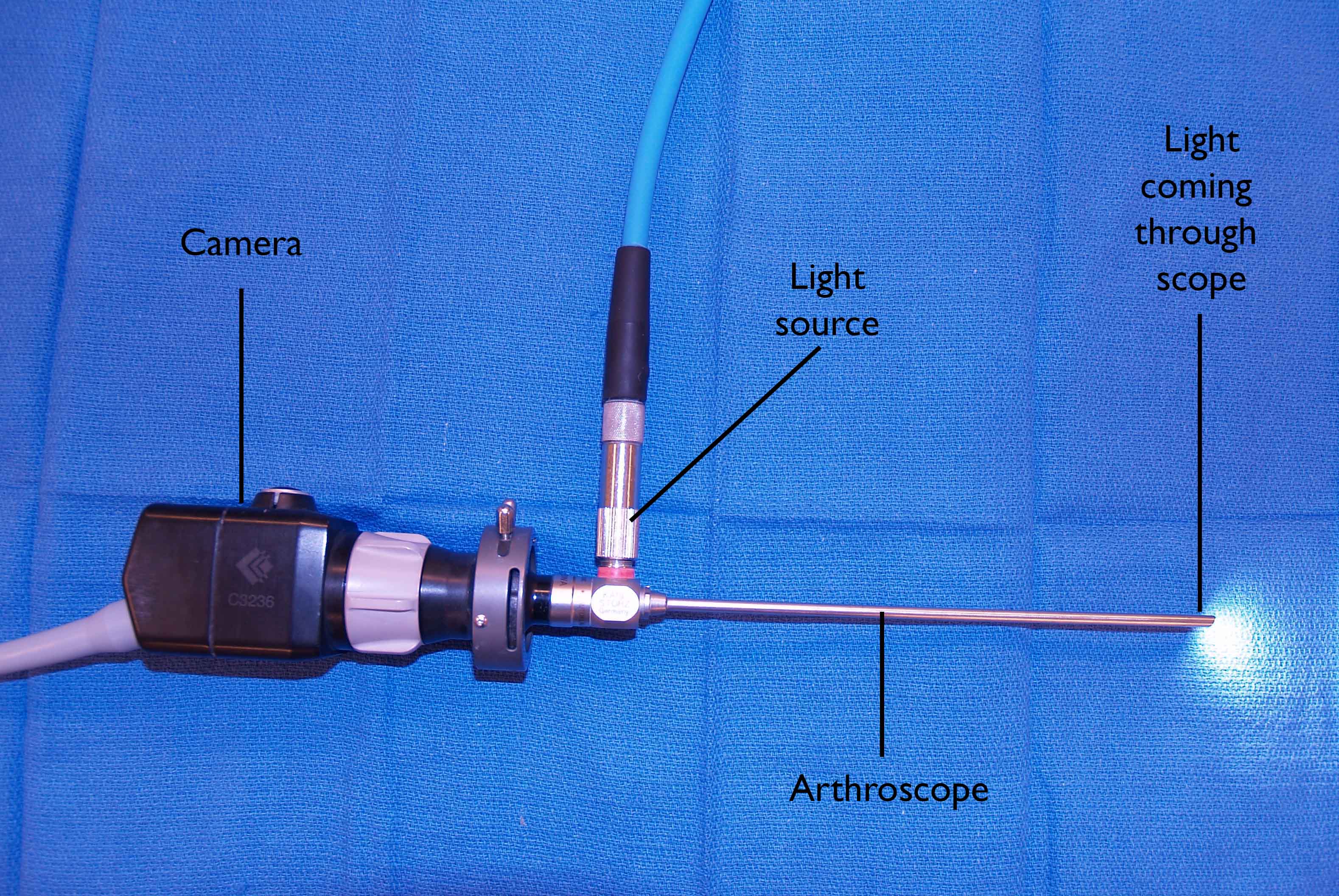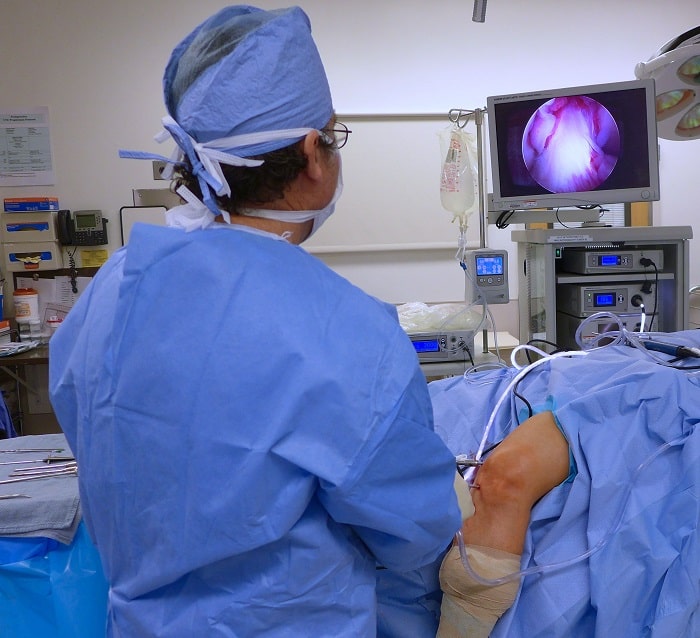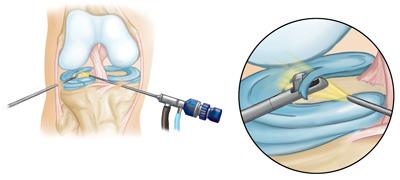Arthroscopy
Arthroscopy is a surgical procedure that orthopaedic surgeons use to visualize and treat problems inside a joint. The word arthroscopy comes from two Greek words, "arthro" (joint) and "skopein" (to look). The term literally means "to look within the joint."
In arthroscopic surgery, an orthopaedic surgeon makes a small incision in the patient's skin, then inserts pencil-sized instruments that contain a small lens and lighting system to magnify and illuminate the structures inside the joint. Light is transmitted through fiber optics to the end of the arthroscope that is inserted into the joint.
By attaching the arthroscope to a miniature camera, the surgeon is able to see the interior of the joint through this very small incision, rather than the larger incision needed for open surgery.


When is arthroscopy used?
Your bones, cartilage, ligaments, muscles, and tendons can all be damaged by disease and injury. To diagnose your condition, your doctor will take a thorough medical history, perform a physical examination and order imaging studies — usually x-rays. For some conditions, an additional imaging study — such as a magnetic resonance imaging (MRI) scan or a computerized tomography (CT) scan — may also be needed. After making a diagnosis, your doctor will determine the most appropriate treatment choice for your condition.
Although the inside of nearly all joints can be viewed with an arthroscope, six joints are most frequently examined with this instrument. These are the knee, shoulder, elbow, ankle, hip and wrist. As advances are made in fiberoptic technology and new techniques are developed by orthopaedic surgeons, other joints may be treated more frequently in the future.
Orthopaedic surgeons use arthroscopy to view inside joints. The minimally invasive procedure takes place through small incisions. It enables providers to diagnose and treat problems like arthritis, rotator cuff tears, carpal tunnel syndrome and ACL tears.
How is arthroscopy performed?
Arthroscopic surgery, although much easier in terms of recovery than open surgery, still requires the use of anesthetics and the special equipment in a hospital operating room or outpatient surgical suite. You will be given a general, spinal, or a local anesthetic, depending on the joint or suspected problem.
A small incision (about the size of a buttonhole) will be made to insert the arthroscope. Several other incisions may be made to see other parts of the joint or insert other instruments.
Corrective surgery is performed with specially designed instruments that are inserted into the joint through accessory incisions. Originally, arthroscopy was simply a diagnostic tool used for planning standard open surgery.

